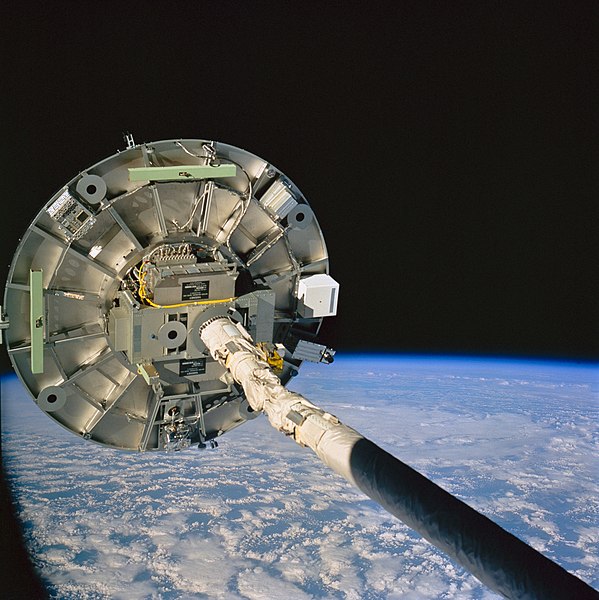Space manufacturing or In-space manufacturing is the fabrication, assembly or integration of tangible goods beyond Earth's atmosphere, involving the transformation of raw or recycled materials into components, products, or infrastructure in space, where the manufacturing process is executed either by humans or automated systems by taking advantage of the unique characteristics of space. Synonyms of Space/In-space manufacturing are In-orbit manufacturing, Off-Earth manufacturing, Space-based manufacturing, Orbital manufacturing, In-situ manufacturing, In-space fabrication, In-space production, etc.
A vision of a future Moon base that could be produced and maintained using 3D printing
Crystals grown by American scientists on the Russian Space Station Mir in 1995: (a) rhombohedral canavalin, (b) creatine kinase, (c) lysozyme, (d) beef catalase, (e) porcine alpha amylase, (f) fungal catalase, (g) myglobin, (h) concanavalin B, (i) thaumatin, (j) apoferritin, (k) satellite tobacco mosaic virus and (l) hexagonal canavalin.
Comparison of insulin crystals growth in outer space (left) and on Earth (right)
The Wake Shield Facility is deployed by the Space Shuttle's robotic arm. NASA image
Weightlessness is the complete or near-complete absence of the sensation of weight, i.e., zero apparent weight. It is also termed zero g-force, or zero-g or, incorrectly, zero gravity.
Astronauts on the International Space Station experience only microgravity and thus display an example of weightlessness. Michael Foale can be seen exercising in the foreground.
NASA's KC-135A plane ascending for a zero gravity maneuver
Inside a Russian Ilyushin 76MDK of the Gagarin Cosmonaut Training Center
Zero-gravity testing at the NASA Zero Gravity Research Facility








